Dots (2012)
Source Code (Scala), Matrix print on fanfold paper. Shown as part of the exhibition «Writing Machines» at gallery ESC im Labor in Graz, Austria.
The development of source code of a music composition software becomes an endless meta-writing process, something that is usually hidden. The visual translation based on a legacy technology (matrix print) imposes its own aesthetics onto this act of re-writing, it reveals several patterns inside the code, and overlays them with a rhythm of silence (gaps) and blackness (erroneous line feeds) caused by glitches of the printer driver. The sound is imaginary, both as remembrance—the needles hitting the paper—and as potentiality—the future compositions which could be written with the software.
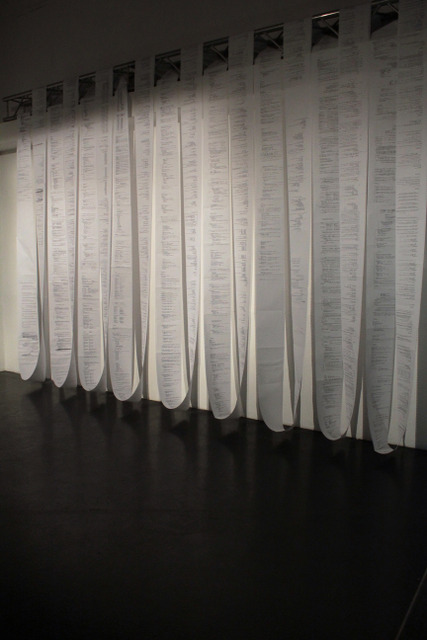
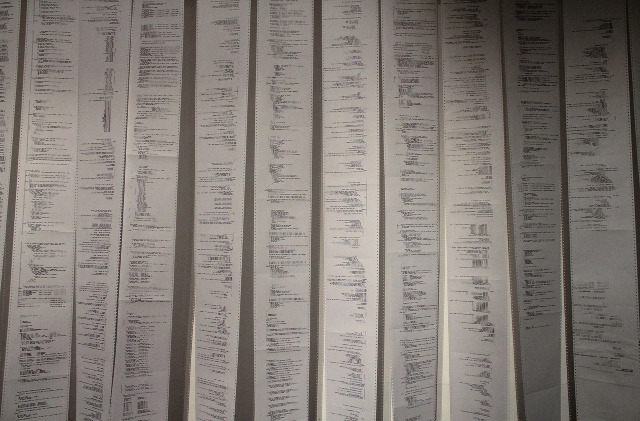
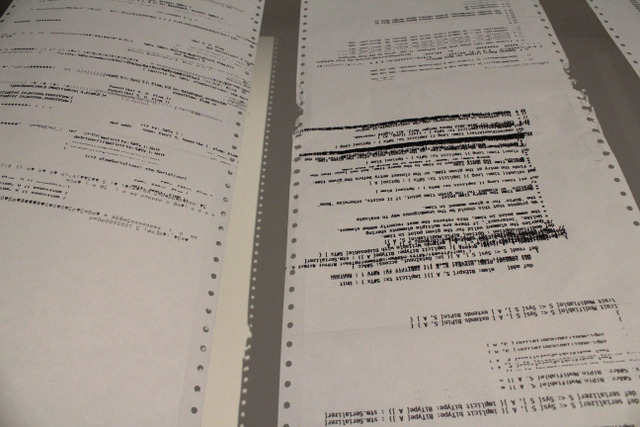
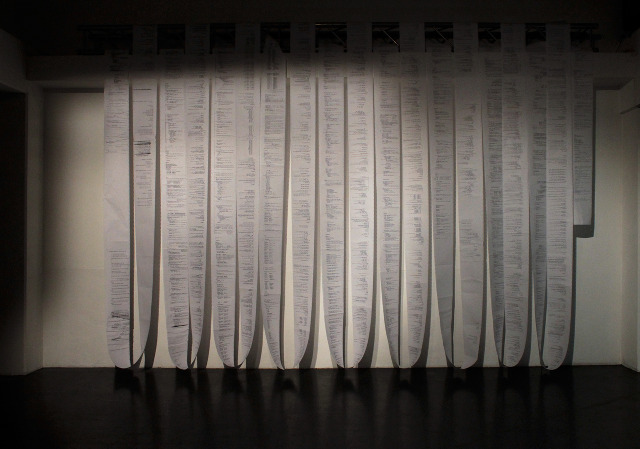
Dots was presented along with Voice Trap. This piece consists of fan-fold paper with a print out of the source code of the software that was used to compose Voice Trap. I found an old dot matrix printer which was used to produce the print.
I wanted to show the pro-gram, the writing before the writing, and this worked surprisingly well due to two distinct effects or visual qualities. The first quality is the appearance of varied rhythmic structures. Through the translation into a visual installation, this aspect which is neither apparent nor “functional” when writing the source code obtains an aesthetic quality of its own. It vibrates with a poetic quality which arises from the fact that the writing process which precedes the sound installation Voice Trap peels off from the latter. Somewhere in these rhythmic patterns lies the code that is sounding the next room, while at the same time these patterns also reflect the entirety of future sound pieces not yet written, their blueprint.
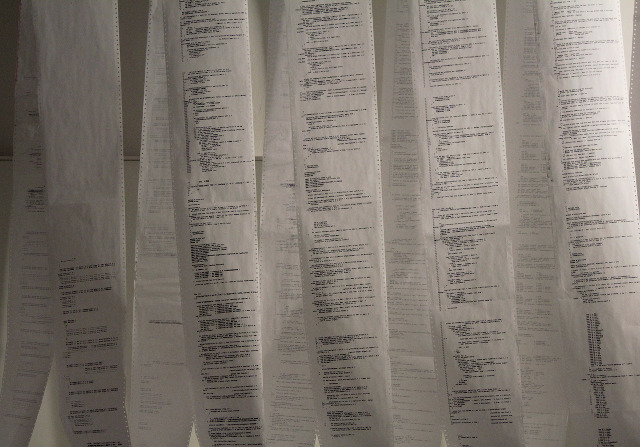
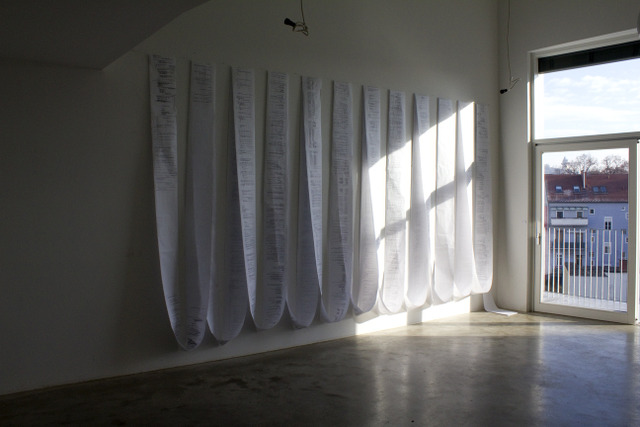
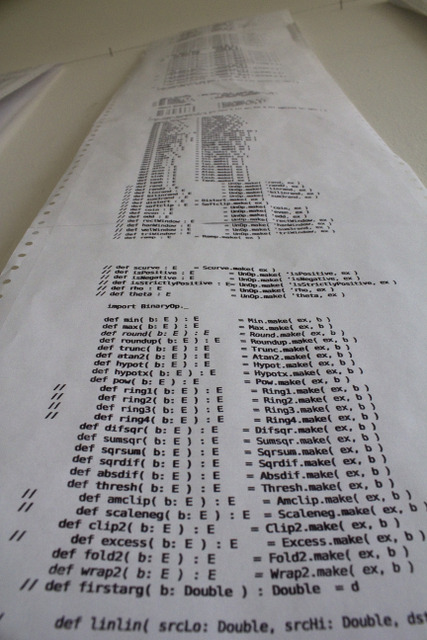
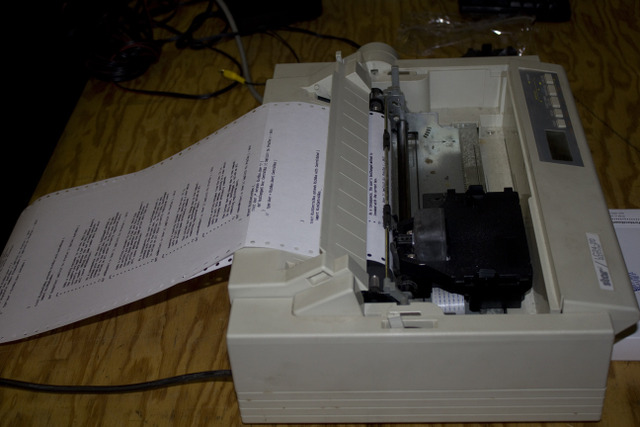
The second quality is the appearance of the particular material process of the translation itself. It was not possible to find the driver for the exact printer model, and I only managed to operate the printer from a very old PC which still had the necessary hardware interface. Especially in the beginning of the printing process, the printer exhibited all sorts of uncontrolled behaviour, such as at times printing random symbols, repeating lines, forgetting line feed so that multiple text lines were superimposed, or suddenly feeding an almost empty page. The process of using this particular printing technique overlays the rhythmic patterns of the code with its own rhythm of silence (gaps) and blackness (erroneous line feeds) caused by the glitches of the printer driver. It also adds another sound layer, the reminiscence of the needles hitting the paper. It was almost sad that the longer the printing process took (many hours), the less these artefacts appeared, as if the interface between PC and printer cleaned itself.